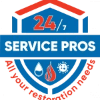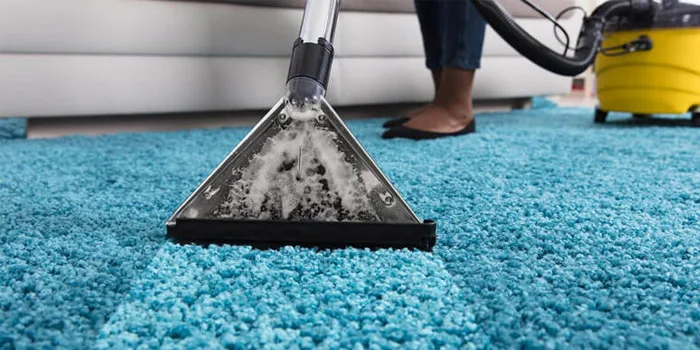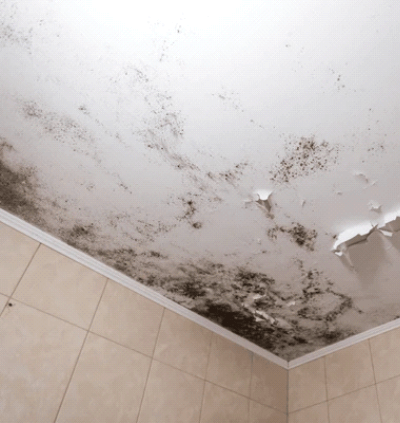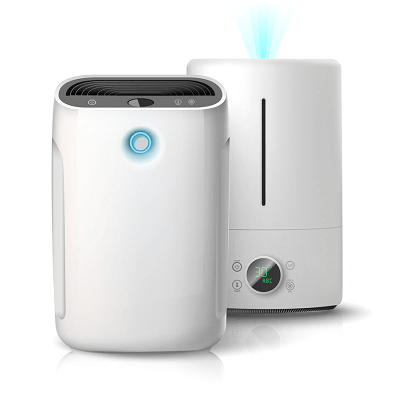Living in a humid climate can be both a blessing and a curse. The warm, moist air can be wonderfully comfortable, but it also creates the perfect environment for mold growth.
Mold, a type of fungus that thrives in damp conditions, can pose significant health risks and cause structural damage to your home.
However, with the right strategies and preventative measures, it’s possible to keep mold at bay, even in the most humid environments.
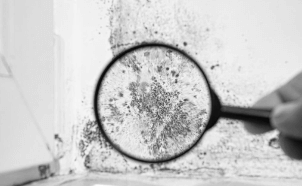
Understanding Mold and Humidity: How They Work Together
Mold spores, invisible to the naked eye, drift through the air, waiting for the right conditions to settle and thrive. These conditions include:
- Mold feeds on organic matter such as wood, paper, or fabric. It’s like a microscopic scavenger, seeking sustenance.
- Mold prefers shadowy corners, hidden from direct sunlight.
- The ideal temperature range for mold growth is between 77°F and 87°F.
- Like all living organisms, mold requires oxygen to survive.
- Here lies the crux—moisture is the mold’s lifeblood. In humid climates, where the air is laden with moisture, mold finds its perfect breeding ground.
The Hidden Dangers of Mold
While some molds are innocuous or even beneficial (think blue cheese), others pose risks to human health:
- Allergic Reactions: Exposure to mold spores can trigger allergic responses. Coughing, sneezing, and itchy eyes are the most common symptoms.
- Respiratory Issues: Prolonged mold exposure can lead to more severe respiratory problems, especially for individuals with asthma or compromised immune systems.
- Mycotoxins: Certain molds produce mycotoxins—potent toxins that can harm humans. Stachybotrys chartarum, famously known as “black mold,” is notorious for its mycotoxin production.
Remember, mold removal isn’t just about aesthetics; it’s vital for both health and structural integrity. Let’s keep our homes mold-free and our knowledge sharp!
Humidity: The Fuel for Mold Growth
Humidity plays a crucial role in mold growth. When the relative humidity level in a home exceeds 60%, it provides an ideal environment for mold to thrive. This is why homes in humid climates are particularly susceptible to mold infestations.
How to Treat Mold in a Humid Climate
Mold, the stealthy intruder, thrives in damp corners and crevices. To thwart its advances, we need a well-armed arsenal of treatment techniques. Let’s delve into the specifics:
Swift Action for Existing Mold
| Action | Details |
| Quick Clean | If furnishings or household items become damp, clean them within the first 24 to 48 hours. Waiting longer promotes mold and mildew growth. |
| Stronger Solution | For challenging infestations, use a bleach solution—mix 1 cup of bleach with one gallon of water. |
| Carpets and Floors | Pay special attention to carpets and flooring. Mold can hide beneath these surfaces. |
| Air It Out | Sunlight’s ultraviolet rays kill mold spores. Allow them to dry outdoors as much as possible. |
Non-Toxic Remedies
Detergent and Rinse
Utilizing detergent to clean surfaces affected by mold can be an effective non-toxic remedy. Detergents are adept at breaking down organic matter and removing mold spores from surfaces. After cleaning, it’s crucial to rinse the area to remove any remaining detergent residue thoroughly.
Once rinsed, ensuring the surface is adequately dried can further inhibit mold growth, as moisture is a primary factor in its proliferation. This method offers a simple yet environmentally friendly approach to tackling mold infestations.
Dehumidifiers and Air Conditioners
Employing dehumidifiers and air conditioners equipped with a dry mode can significantly deter mold resurgence. These appliances work by extracting excess moisture from the air, thereby creating an environment less conducive to mold growth.
By reducing humidity levels within the home, dehumidifiers and air conditioners help mitigate the conditions in which mold thrives. Regular use of these devices, especially in areas prone to high humidity, can serve as a proactive measure against mold infestations without relying on toxic chemicals.
Mold Prevention Strategies
| Strategy | Details |
| Indoor Plants | Introduce houseplants to improve air quality. They act as natural air purifiers. |
| Keep Wet Areas Dry | Regularly clean surfaces within your home, especially after dampness or water exposure. Swift action prevents mold growth. |
| Non-Toxic Cleaning Products | Opt for safe cleaning products that won’t harm your health or the environment. |
| Sunlight and Ventilation | Sun’s UV rays kill mold spores. Proper ventilation reduces humidity levels. |
| Air Conditioners and Dehumidifiers | Control indoor climate and maintain humidity levels below the mold-friendly range. |
| Mold-Resistant Materials | Use these in your home to prevent mold colonization. |
Remember, timely treatment and prevention are crucial for both health and structural integrity.
Identifying Potential Problem Areas
Being able to identify potential problem areas in your home and understanding the importance of professional mold inspections can give you a significant advantage.
While bathrooms, kitchens, and basements are common areas for mold growth several less obvious places can harbor moisture and, consequently, mold. These include:
- Air Conditioning Units: Air conditioners can create a cool and damp environment that mold loves. Maintenance and regular cleaning can prevent mold growth.
- Window Sills: Condensation can accumulate on window sills, providing the perfect breeding ground for mold. Regularly wiping down your windows can keep mold at bay.
- Chimneys: Brick crevices can collect water and organic material; two things mold needs to grow. Regular chimney inspections and cleanings can prevent this.
- Front Loading Washing Machines: The seal near the door can develop mold as it remains wet when the door is not closed properly. Wiping the door and seal after use can prevent this.
Choosing a Professional Mold Inspection Service
When it comes to dealing with mold professional assistance is invaluable. Let’s dive into lesser-known details about selecting a mold inspection service and the critical role of mold remediation:
Selecting a Mold Inspection Service
Certifications and Training
- Look beyond the basics. Seek service providers certified by reputable organizations like the American Council for Accredited Certification (ACAC) and the Institute of Inspection, Cleaning and Restoration Certification (IICRC).
- These certifications ensure expertise in mold inspection tailored to specific climates.
Experience Matters
Not all mold situations are equal. Opt for service providers experienced in tackling mold in humid climates.
References and Reviews
Dig deeper. Check reviews and references from past clients. Positive feedback and willingness to provide references indicate reliability.
Importance of Regular Home Inspections in Humid Climate
Once you’ve addressed a mold problem, the next crucial step is to prevent its unwelcome return. Let’s delve into effective strategies for maintaining a mold-free home, backed by factual information and numerical data:
Regular Cleaning: The Mold Buster
- Frequency Matters: Regular cleaning is your first line of defense. Focus on areas prone to dampness, such as bathrooms and kitchens.
- Mold-Killing Products: Use cleaning products specifically designed to kill mold and prevent its growth. These formulations are certified to tackle the menace.
Proper Ventilation: Breathing Fresh Air
- Ventilate Wisely: Ensure proper ventilation throughout your home, especially in moisture-prone areas. Here’s how:
- Bathrooms: Install exhaust fans to whisk away steam and moisture.
- Kitchens: Proper ventilation prevents condensation and dampness.
- Laundry Rooms: Ventilate to keep humidity in check.
- Dehumidifiers: Consider using a dehumidifier in areas where moisture tends to accumulate. These devices maintain optimal humidity levels.
Monitor Humidity Levels: The Hygrometer’s Role
- The 60% Threshold: Mold thrives in high humidity. Keep indoor humidity levels below 60%. How?
- Hygrometer: Invest in a hygrometer to monitor humidity. Take action if levels creep higher.
- Swift Response: Address any spikes promptly to prevent mold growth.
Regular Home Inspections: The Mold Detective
- Why Inspect? Regular inspections catch mold problems early, preventing them from escalating.
- Professional Insight: Consider hiring a certified professional for thorough inspections, especially if you reside in a humid climate.
- Cost-Effective: Upfront inspection costs pale in comparison to the expense of unchecked mold growth.
A Mold-Free Home is a Healthy Home
Living in a humid climate doesn’t mean you have to live with mold. You can maintain a healthy, mold-free home with the right strategies and vigilance. Regular cleaning, proper ventilation, monitoring humidity levels, and regular home inspections are all key components of an effective mold prevention strategy.
However, if you do encounter a mold problem, it’s important to address it promptly and effectively to prevent health issues and structural damage to your home. This is where professional services like those offered by 24/7 Service Pros can be invaluable.
24/7 Service Pros is a professional water, mold, and fire restoration company. They offer a comprehensive range of services, including mold removal and water damage restoration. Their team of experts is equipped with the knowledge, skills, and tools to handle any mold-related issue, ensuring your home is safe and mold-free.
Whether you’re dealing with a current mold problem or want to take steps to prevent future issues, 24/7 Service Pros can help. We understand the unique challenges of living in a humid climate and can provide tailored solutions to meet your needs. So why wait? Reach out to them today and take the first step towards a healthier, happier home.
Remember, a mold-free home is not just a comfortable home; it’s a healthy home. And everyone deserves a healthy living environment. So, take action today and say goodbye to mold!
Which Areas We Serve in South Florida
- Hollywood
- Davie
- Miami Beach
- Weston
- Hallandale Beach
- North Miami Beach
- Sunrise
- Tamarac
- Coconut Creek
- Fort Lauderdale
- Miami
- Boca Raton
- Hialeah
- Coconut Creek
- Margate
- Pembrock Pines
- Dania Beach
- Lauderhill
- Delray Beach
- Pompano Beach
- Deerfield Beach
- Coral Springs
- Plantation
- Doral
- Aventura
- Miramar
- Sunny Isles Beach
- Hollywood
- Davie
- Miami Beach
- Weston
- Hallandale Beach
- North Miami Beach
- Sunrise
- Tamarac
- Coconut Creek
- Fort Lauderdale
- Miami
- Boca Raton
- Hialeah
- Margate
- Pembrock Pines
- Dania Beach
- Lauderhill
- Delray Beach
- Pompano Beach
- Deerfield Beach
- Coral Springs
- Plantation
- Doral
- Aventura
- Miramar
- Sunny Isles Beach
